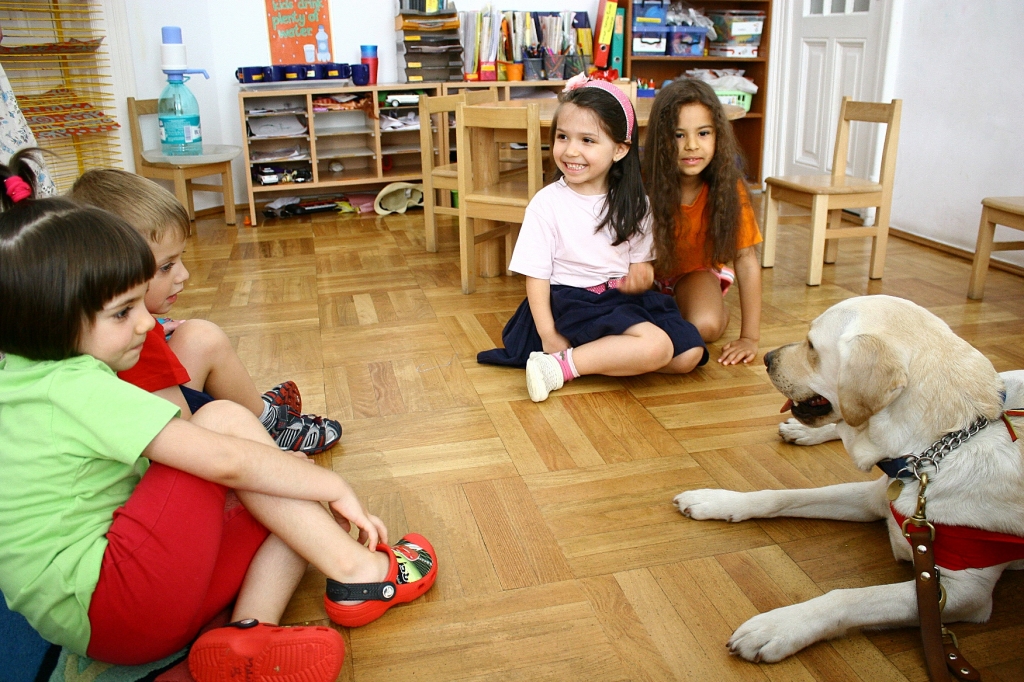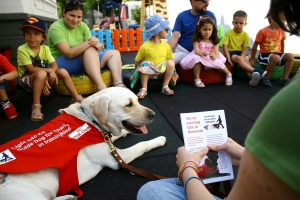The appearance of a new child in families who love pets raises a question mark over whether animals should be kept around children in the home. Many parents worry about their child’s health or normal development. According to studies concerning the impact of pets on children’s health, those who grow up with a pet around the home were found to be at lesser risk of developing heart disease, allergies, infections and respiratory diseases in general. Moreover, babies who grow up in homes with pets develop 44% less ENT infections compared to those without pets and have a 29% lower chance of receiving antibiotics compared to others.
“Pediatrics” magazine published a report indicating that homes in which children grew up with pets, which hadn’t been over-disinfected, offered a healthier environment than those of children without a pet.
Acorns Nursery teachers believe that animals can have positive benefits for children and they involve them in plenty of activities, both real and imaginative.
“We all know that overall health is improved by regular exercise, and a pet who encourages our child to play and run or even walk in the park helps lower their risk of high blood pressure, obesity and keeps help keep them fit” says Valentina Secara, teacher and General Manager of Acorns Nursery.
Fear of Animals
Be it parents, grandparents or teachers, the adults around children need to know that simple anxiety can turn into a phobia if not managed properly.
If you want to cure a child’s fear of animals, the first step is to identify the causes and boundaries of that fear.
Acorns Nursery Manager shares teachers’ secrets: “during play time, by asking the right questions, without insisting on the subject, you can find out what provoked this fear, if it was a personal experience or an informational one (eg he just heard from other children that a dog can bite you). Then, teachers or parents can create stories or imaginative situations in which animals are friendly or they can join in a child’s favourite games”.
If after plenty of stories and imaginative games which present animals as harmless friends, the child reacts positively, you can move on in approaching the subject of fear.
Psychologists call this stage systematic desensitization to phobic stimulus.
A few minutes around a friendly pet without forcing physical contact, and then gradually a more physical approach should remove fear of animals, especially if this fear is not due to any episodes of aggression which a child has encountered from an animal.
Although pets have a positive impact on children, the adults around them need to establish boundaries, in order to avoid exposing children to possible dangers. Not every dog encountered on the street needs to be touched, and sudden movements are not recommended. Also, animals can be unpredictable while they eat, sleep or play.
Friendly animals
The best friends of children are dogs, especially breeds as Golden Retriever, Labrador, Poodle, Beagle, English Bulldog or Collie (Spanish Shepard).
Other animals which could grow around your child are rabbit, Guinea pig or canary, while child-cat relationships should be permanently supervised until the age of 5.
Also, horses that they might encounter at riding classes, have a beneficial influence on children’s psycho-emotional development.
When your child expresses his wish to have a pet, it is vital that an adult talk about new responsibilities that this will entail. Meanwhile, the parent also needs to be ready to receive an animal into their home. Children under 5 aren’t yet able to fully understand what it means to take care of a pet while those under 3-4 need permanent supervision whenever they interact with the animal. 

